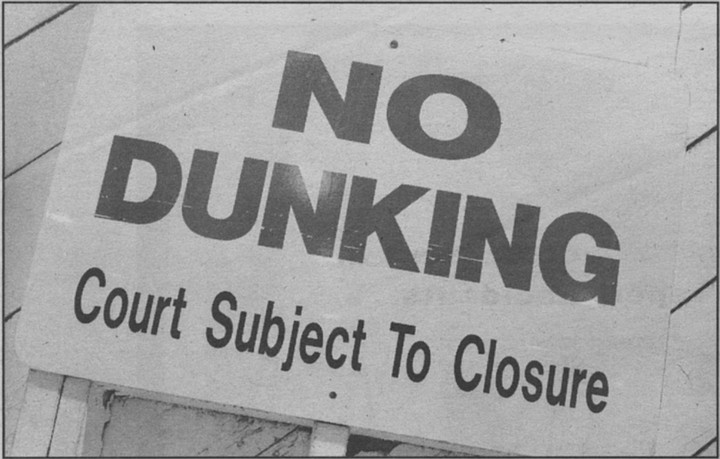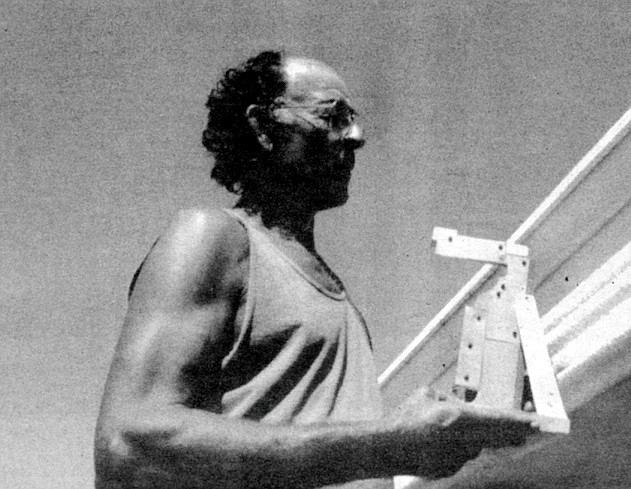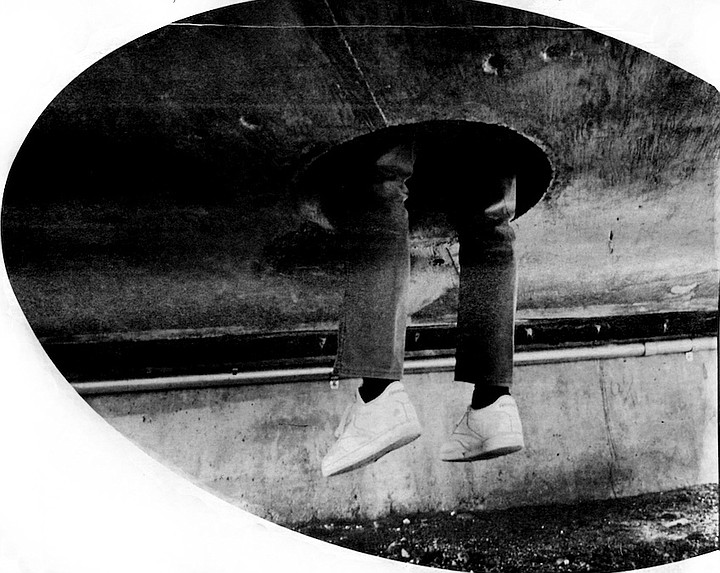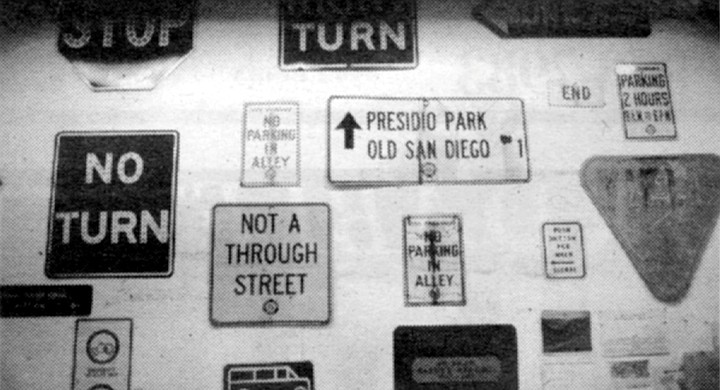 Facebook
Facebook
 X
X
 Instagram
Instagram
 TikTok
TikTok
 Youtube
Youtube

A prolific writer for Sunset magazine, Jensen has authored books on San Diego and California. He wrote stories on local architecture for the Reader in the mid-1990s.
At lunch she is joined by her husband, Louis Welsh, whose parents, Frances and John Lloyd Wright (son of Frank Lloyd Wright), both now deceased, lived next door. Pat and Lou eat in the garden if it’s sunny. (August 17, 1995)

San Diego is one of the only basketball meccas where beach sand tracked onto the court is part of the game. At South Mission or Crown Point or in North County at Pillbox or Glen Park up in Cardiff. (April 6, 1995)
Today in Mission Hills’ neighborhoods a few blocks north and south of Fort Stockton Drive, Sunset Boulevard, and Juan Street, alleys have a different feeling than straight alleys in Pacific Beach. (August 17, 1995)
“We narrowed the Mira Mesa branch down to a design we liked, one with a roof we thought was very attractive. But the community group didn’t like it: they thought it looked like a Quonset hut.” (May 18, 1995)

McDonald’s, once known for its exuberant golden twin parabolas flanking a glass-and-steel pavilion, is now the most boring recitation of mansardism. Only the Wienerschnitzel chain still clings to its defining, red-roofed mini-A frames (March 30, 1995)
"One of the county’s most appealing concentrations of ranch houses occurs in an unlikely place, the steep hillsides and winding streets of Del Mar…. several of these May mass-market houses were built in Del Mar as second homes.” (March 2, 1995)

Two factors helped bring the artistic use of stucco to a halt: modernism, with its emphasis on simple, unbroken planes, and the invention of the stucco “gun,” a machine process for blowing stucco onto walls. (December 1, 1994)
One disturbing element of the Mercado Apartments is its parking facilities. The two lots accommodate 100 cars each, and until shade trees (jacarandas and other flowering species) take over, will invite comparisons to a small Wal-Mart (June 28, 1994)

Pine Valley is famous among bridge engineers. The first pre-stressed concrete bridge in the U.S., built using a particular kind of cantilever technology, it appeared to defy gravity during construction. It is located near two earthquake faults. (September 15, 1994)
Landscape architect Roger DeWeese cites Balboa Park’s landscape as San Diego’s most enduring feature. “Our society has been borrowing on the foresight of some real visionaries for three or four generations now,” (April 14, 1994)

People wanted SLOW signs in their neighborhoods, on dangerous curves, intersections. But “slow is no longer a legal sign,” says Levy. “It’s too general. Now it must be why you’re supposed to go slow.” (June 23, 1994)
Henry left this morning. He hooked up with a fellow we met on the morning radio net who was looking for a little company on his drive to La Paz. He’ll bring the truck back tonight. (March 10, 1994)
In San Diego’s towers we find our final denial of the endless plains and deserts that brought us to this Western shore. We embrace the power of mountains, the connection between man and the firmament. (Feb. 17, 1994)


A prolific writer for Sunset magazine, Jensen has authored books on San Diego and California. He wrote stories on local architecture for the Reader in the mid-1990s.
At lunch she is joined by her husband, Louis Welsh, whose parents, Frances and John Lloyd Wright (son of Frank Lloyd Wright), both now deceased, lived next door. Pat and Lou eat in the garden if it’s sunny. (August 17, 1995)

San Diego is one of the only basketball meccas where beach sand tracked onto the court is part of the game. At South Mission or Crown Point or in North County at Pillbox or Glen Park up in Cardiff. (April 6, 1995)
Today in Mission Hills’ neighborhoods a few blocks north and south of Fort Stockton Drive, Sunset Boulevard, and Juan Street, alleys have a different feeling than straight alleys in Pacific Beach. (August 17, 1995)
“We narrowed the Mira Mesa branch down to a design we liked, one with a roof we thought was very attractive. But the community group didn’t like it: they thought it looked like a Quonset hut.” (May 18, 1995)

McDonald’s, once known for its exuberant golden twin parabolas flanking a glass-and-steel pavilion, is now the most boring recitation of mansardism. Only the Wienerschnitzel chain still clings to its defining, red-roofed mini-A frames (March 30, 1995)
"One of the county’s most appealing concentrations of ranch houses occurs in an unlikely place, the steep hillsides and winding streets of Del Mar…. several of these May mass-market houses were built in Del Mar as second homes.” (March 2, 1995)

Two factors helped bring the artistic use of stucco to a halt: modernism, with its emphasis on simple, unbroken planes, and the invention of the stucco “gun,” a machine process for blowing stucco onto walls. (December 1, 1994)
One disturbing element of the Mercado Apartments is its parking facilities. The two lots accommodate 100 cars each, and until shade trees (jacarandas and other flowering species) take over, will invite comparisons to a small Wal-Mart (June 28, 1994)

Pine Valley is famous among bridge engineers. The first pre-stressed concrete bridge in the U.S., built using a particular kind of cantilever technology, it appeared to defy gravity during construction. It is located near two earthquake faults. (September 15, 1994)
Landscape architect Roger DeWeese cites Balboa Park’s landscape as San Diego’s most enduring feature. “Our society has been borrowing on the foresight of some real visionaries for three or four generations now,” (April 14, 1994)

People wanted SLOW signs in their neighborhoods, on dangerous curves, intersections. But “slow is no longer a legal sign,” says Levy. “It’s too general. Now it must be why you’re supposed to go slow.” (June 23, 1994)
Henry left this morning. He hooked up with a fellow we met on the morning radio net who was looking for a little company on his drive to La Paz. He’ll bring the truck back tonight. (March 10, 1994)
In San Diego’s towers we find our final denial of the endless plains and deserts that brought us to this Western shore. We embrace the power of mountains, the connection between man and the firmament. (Feb. 17, 1994)
Comments